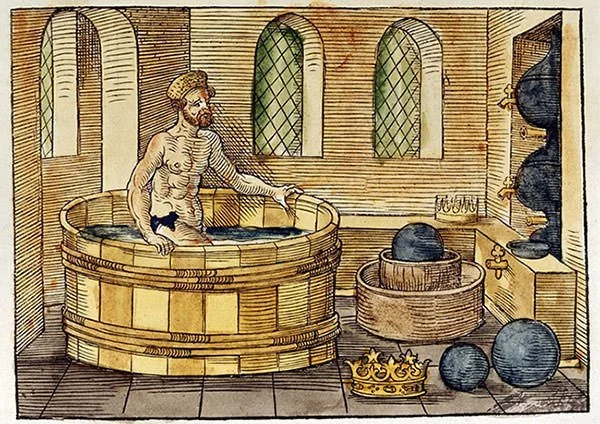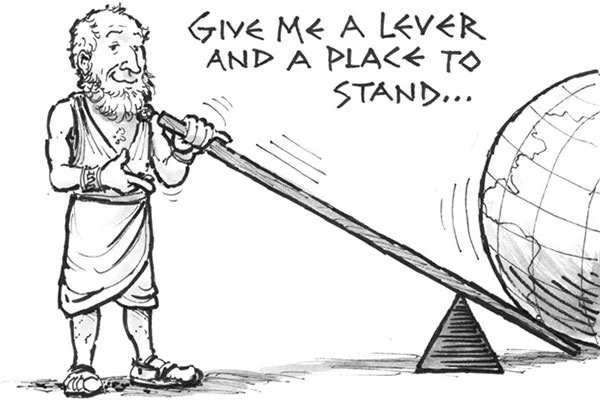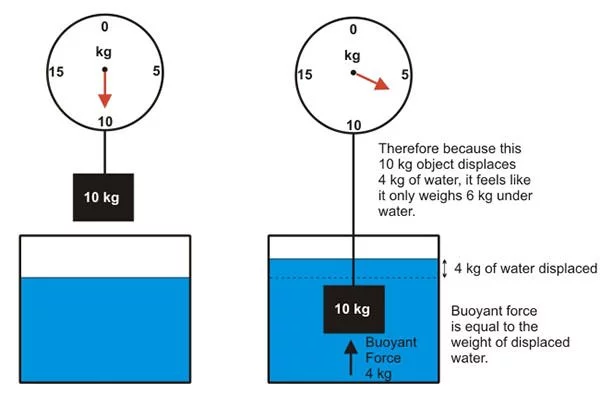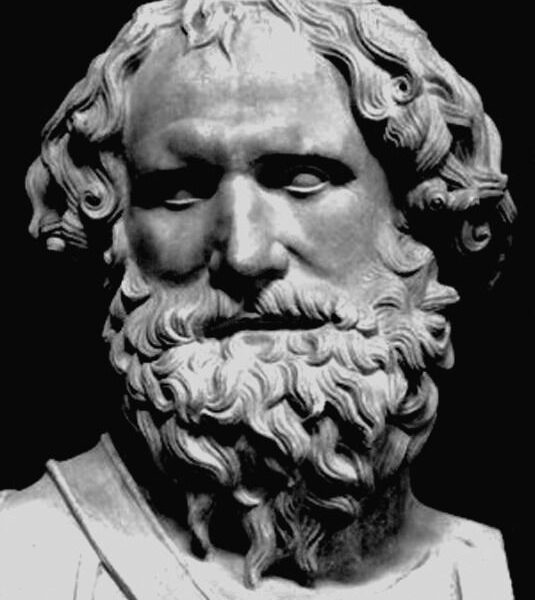It’s not hard to figure out why March 14 is celebrated annually as “Pi Day” by math fans: The date resembles the ratio of a circle’s circumference to its diameter — the number that begins with 3.14
Pi is the 16th letter in the Greek alphabet, which has 24 characters, just like that of the standard English one. The numeric representation of pi (3.14…..) is equal to the circumference of a circle divided by its diameter.
Ancient Greek mathematician Archimedes of Syracuse, who lived in the third century B.C. and is considered the greatest mathematician of the ancient world, is credited with doing the first calculation of pi.
Pi, the number used to find the area and circumference of a circle, actually goes on infinitely. According to History.com, pi has currently been calculated out to “more than [one] trillion decimal places.”
The last calculation done at the writing of this article — according to USA Today — was in August 2021 at the University of Applied Sciences in Switzerland. It put pi at 62,831,853,071,796 digits.
Whether pi is useful for calculating the area of a circle has been questioned in more recent years; PiDay.org noted that a growing number of mathematicians believe an alternative called tau is better. “You can simply multiply tau with the radius of a circle to calculate its circumference intuitively,” the website explained. Pi has its uses outside of math class, though.
It has “been used to help calculate the orbit of planets in the solar system and examine how ripples in rivers carry energy.”
On March 12, 2009, the U.S. House of Representatives passed a non-binding resolution recognizing March 14, 2009, as National Pi Day. The goal was to increase interest in math and science.
ARCHIMEDES THE ANCIENT GREEK MATHEMATICIAN
Archimedes was born around 287 BC in the seaport city of Syracuse in Sicily. Syracuse was one of the major powers in ancient Greece and has been described as “the greatest Greek city and the most beautiful of them all”. Its ruler at the time was King Hiero II.
Little is known about the family of Archimedes. He was the son of Phidias, an astronomer. We know this as Archimedes gives us this information in one of his works, The Sandreckoner. According to Plutarch, the ancient Greek biographer and essayist, Archimedes was related to King Hiero II.
Historians believe that he at least had a friendship with the king of Syracuse even if he wasn’t related to him. It is not known whether Archimedes married or had children
The city of Alexandria in Egypt was the intellectual and cultural centre of ancient Greece at the time of Archimedes. Though Archimedes was born, died and lived most of his life in Syracuse, it is highly likely that as a young man he studied in Alexandria with the successors of another great Greek mathematician Euclid. This can be deduced from the fact that he personally knew other mathematicians who were working there like Conon of Samos and Eratosthenes of Cyrene, and he sent his results to Alexandria with personal messages. Also, Archimedes was familiar with the mathematics which had developed in Alexandria.
The most famous story related to Archimedes involves a challenge presented to him by King Hiero II. The king had supplied pure gold to a goldsmith to make a crown for a temple but he was uncertain about the finished product doubting whether the goldsmith had mixed some silver in the crown. He gave Archimedes the task to find the purity of the crown without damaging it. After being troubled for a while, Archimedes, supposedly in his bath, discovered that there was a direct correlation of the water overflowing from the tub with his immersed body. He then allegedly ran through the streets naked yelling, “Eureka” (“I have found [it]!”). Eureka has since become a common interjection to celebrate a discovery or invention. The test was conducted and it was ultimately proved that silver had indeed been mixed in the crown. Whether or not the alleged incident took place, Archimedes did formulate the famous Archimedes principle which could be used to solve the problem he had been presented.

A lever is a machine consisting of a rigid rod pivoted at a fixed hinge, or fulcrum. In his book On the Equilibrium of Planes, Archimedes proved the law of the lever using geometric reasoning.
It shows that if the distance a from the fulcrum to where the input force is applied (point A) is greater than the distance b from the fulcrum to where the output force is applied (point B), then the lever amplifies the input force. Archimedes’s understanding of his principle of mechanical advantage caused him to remark,
‘Give me a place to stand, and I shall move the Earth with it.

The Archimedes’ principle is a law in hydrostatics formulated by Archimedes which states that a body totally or partially immersed in a fluid is subject to an upward force (buoyant force) that is equal in magnitude to the weight of the fluid it displaces. Thus, the net upward force on the object is the difference between the buoyant force and its weight. If this net force is positive, the object rises; if negative, the object sinks; and if zero, the object remains in place without either rising or sinking. Archimedes’ principle is a law of physics fundamental to fluid mechanics and it has numerous applications including the hydrometer, which uses it to determine the specific gravity (relative density) of liquids; designing of ships and submarines; and in controlling the flight of a hot-air balloon.

He invented and developed methods similar to calculus and used them to find, among other things, the area of a circle; the surface area and volume of a sphere; the area under a parabola; and an accurate estimation of the value of pi, considered one of his most important achievements.
He also invented a system for expressing large numbers. Apart from his accomplishments in mathematics, Archimedes laid the foundation of hydrostatics through his work On Floating Bodies, the first known work in the field.
Archimedes applied his mathematical knowledge to invent war machines which made him one of the most renowned figures in the ancient west. One of these machines was the Claw of Archimedes which was used to defend the seaside city of Syracuse against an amphibious attack. It consisted of a hook system to lift and topple ships that approached the walls of the city. In 214 BC, during the Siege of Syracuse, the Romans attacked Syracuse with a fleet of 60 warships under Marcellus. The claw machines reportedly sank many Roman ships and threw the attack into confusion.

The weapons developed by Archimedes successfully defended Syracuse for a couple of years but the Romans were ultimately victorious in 212 BC. The Roman commander Marcellus was well aware of the genius of Archimedes and he specifically ordered that Archimedes should not be killed.
According to legend, Archimedes was contemplating a mathematical diagram when the city was captured. A Roman soldier ordered him to come and meet General Marcellus but he declined, saying that he had to finish working on the problem. Enraged by the reply, the soldier killed the 75-year-old Archimedes with his sword.
The last words attributed to Archimedes are “Nōlī turbāre circulōs meōs!” (“Do not disturb my circles!”), a reference to the work he was doing when disturbed by the soldier. However, there is no reliable evidence to confirm this.
The works of Archimedes were first compiled into a comprehensive text in 530 AD by Byzantine architect Isidorus of Miletus.
A copy of this text was made around 950 AD, again in the Byzantine Empire. This manuscript then made its way to a library in Jerusalem and, ultimately, in 1906, it was discovered by Danish historian Johan Ludvig Heiberg.
A leading authority on Archimedes, Heiberg confirmed that the palimpsest included works by Archimedes thought to have been lost. The Archimedes Palimpsest contains two important treatises by Archimedes that can be found nowhere else, The Method and Stomachion.
It is now readable after scientific and scholarly work from 1998 to 2008 which used multispectral imaging and an x-ray technique. Archimedes Palimpsest has shed new light on Archimedes including the fact that he anticipated calculus and considered the concept of actual infinity.


